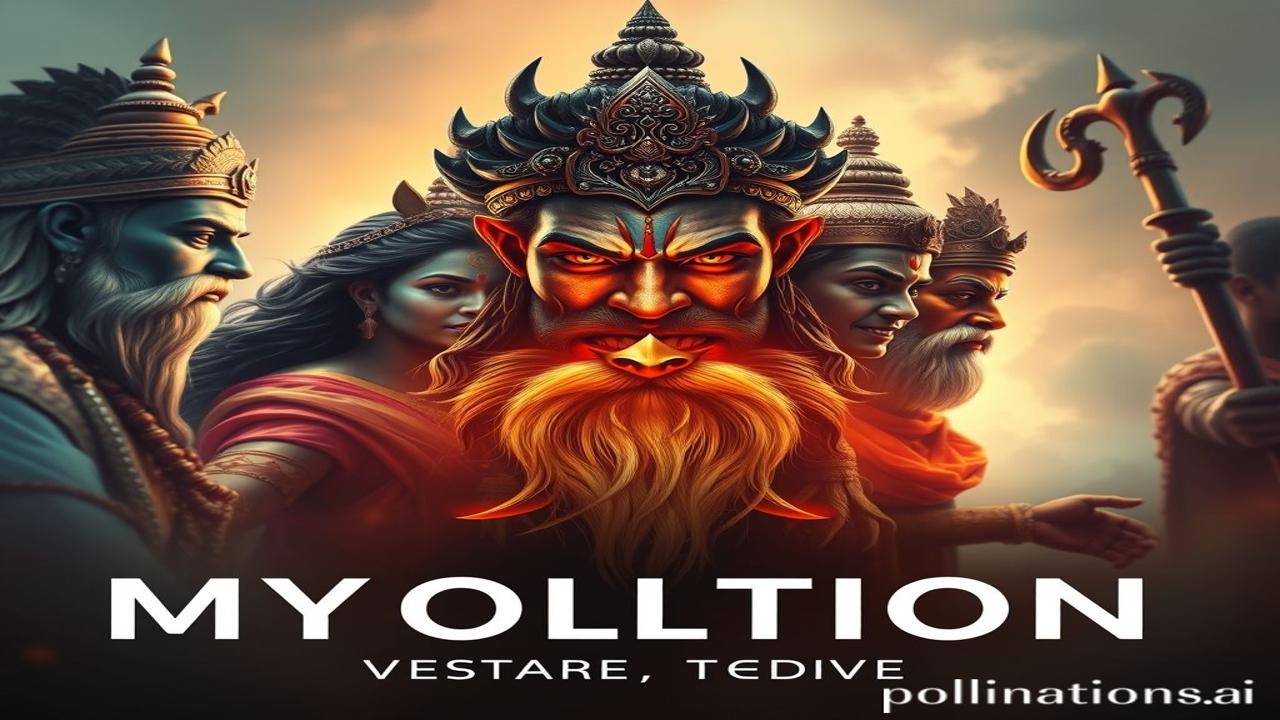Waqt Ke Aaine Mein: Mythological Characters Ka Badalta Swaroop
Kabhi socha hai, ki Ramayan ki Sita maa, ya Mahabharat ke Krishna, aaj ke zamane mein kaise dikhte? Kya unki soch, unke faisle aaj bhi wahi hote? Waqt ki dhool mein, kahaniyan toh reh jaati hain, lekin unke kirdaar, unke rang, thode badal jaate hain…
Mythological Characters: Kahani Kya Hai, Aur Kyun Sunte Hain Hum?
So, what’s the deal with mythological characters? These aren’t just characters in old stories; they’re reflections of our values, our fears, and our dreams. These characters, drawn from epics like the Ramayana, Mahabharata, and Puranas, have shaped our understanding of dharma, karma, and the very essence of ‘Bharatiyata’ (Indianness) for millennia.
Yeh sab shuru hua aaj se hazaron saal pehle. Think about it – ancient bards chanting tales around flickering firelight, passing down stories of gods and goddesses, heroes and demons. These stories, originating from around 1500 BCE onwards with the Vedic period, weren’t just entertainment; they were moral compasses, teaching lessons on right and wrong, sacrifice and duty. The importance lies in their enduring relevance – these narratives still inform our cultural identity, our rituals, and our values today.
Zameeni Sach: Logon Ka Jeevan Aur Mythological Kirdaar
Imagine a bustling ancient city like Hastinapur. The clang of metal from the blacksmith’s workshop, the rhythmic chanting of mantras from the nearby gurukul, the vibrant colors of fabrics in the marketplace. Now, imagine Draupadi, a strong-willed queen, navigating the treacherous political landscape of the Kuru clan. Or picture Arjun, torn between his duty as a warrior and his love for his family, seeking guidance from Krishna on the battlefield of Kurukshetra.
“Ma Rukmini ne aaj naye kapde pehne, kyunki mandir mein utsav tha,” the women would whisper, preparing for the festival celebrating Krishna’s victory over evil. Life was interwoven with these mythological tales. Rulers sought inspiration from the righteous rule of Ram, artisans carved intricate depictions of deities on temple walls, and farmers prayed to Indra for bountiful harvests.
Dharohar Aur Pehchan: Aaj Bhi Zinda
Today, the echoes of these characters resonate everywhere. From the elaborate Ramlila performances during Dussehra to the intricate carvings adorning ancient temples, they are a constant reminder of our rich cultural heritage. We see their presence in our language, in our art, and in the values we strive to uphold.
Think about the ‘Shakti’ (power) embodied by Durga during Navratri, the ‘Kala’ (art) evident in every classical dance form inspired by Krishna’s life, or the ‘Dharohar’ (heritage) preserved in the architecture of Khajuraho. These are not just relics of the past; they are living, breathing elements of our modern identity.
Mazedar Tathya Ya Bhram-Bhanjak: Myths Busted!
Log samajhte hain ki Hanuman sirf ek bhakt the… lekin asli sach yeh hai ki Hanuman ji na sirf bhakt the, balki ek bahut hi powerful warrior, scholar, aur diplomat bhi the. Unka character multi-faceted hai!
Drishya Aur Bhavnaayen: Sensory Overload!
Imagine the air thick with the fragrance of incense and marigolds during a puja. Feel the cool, smooth texture of the marble floor in a temple. Hear the rhythmic chanting of mantras echoing through the halls. The visual feast of vibrant colours, the tactile sensations, and the auditory symphony all combine to create an immersive experience, transporting you back to the world of the myths.
Antim Vichar Ya Uddharan: A Closing Thought
Mythological characters are not just stories; they are living metaphors. Their evolution over time reflects our own changing perspectives, our own evolving values. They continue to inspire, to challenge, and to remind us of the enduring power of the human spirit.
“Yada yada hi dharmasya glanir bhavati bharata,
Abhyutthanam adharmasya tadatmanam srjamyaham.”
(Whenever there is a decline in righteousness and an increase in unrighteousness, O Arjuna, at that time I manifest Myself.) This verse from the Bhagavad Gita reminds us that these mythological figures, in their various forms, are eternally relevant, adapting to the needs of each generation.
